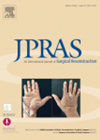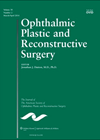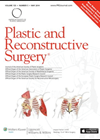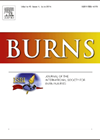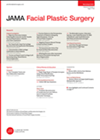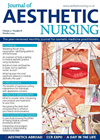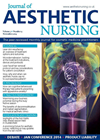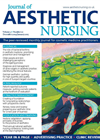
Journal Reviews
Long-term follow-up of maxillary advancement in cleft palate cases
Twenty-two consecutive patients with cleft lip and palate, treated with maxillary advancements and distraction osteogenesis, were followed up for between five and 13 years. They were divided into two groups, those who were still growing and those whose growth was...
A new technique for correction of medial ectropion with a lax medial canthal tendon
This is a prospective study of a new technique for repair of medial ectropion associated with medial canthal tendon (MCT) laxity. The procedure was performed on 79 eyes and involved excision of an ellipse of tissue from below the punctum...
Sleep side preference affecting lid laxity in normal subjects
This is an interesting, masked, prospective study examining the hypothesis that increased upper eyelid laxity in normal patients may be related to the side on which they usually sleep. Two hundred and sixty-two normal subjects, over 55 years old, had...
Long-term results of lateral brow suspension
The authors of this paper report their results of lateral brow suspension using a modified Fogli technique. The technique was done under local anaesthesia and most times in combination with other facial rejuvenation procedures. A horizontal incision in the temporal...
Histologic changes after two different protocols of facial skin fat grafting
The authors of this study show the results of two different protocols of fat grafting using adipose-derived stem cells. This is a prospective study with six consecutive patients in whom bilateral fat grafting was performed using centrifuged stromal cells on...
Management of keloid and hypertrophic scars
The management of keloid and hypertrophic scars is commonplace in all burns and plastic surgery outpatient clinics, and in this paper the authors review many of the current treatments available for this difficult problem. They start with an introduction about...
How accurate are doctors in estimating burn size
This was a retrospective review with data collated from two burns units in Sydney, Australia. The purpose of the study was to compare total body surface area (TBSA) burn size estimation between referring centres and burn units in adult patients....
Is rib cartilage a safe material for rhinoplasty
This is a meta-analysis of complications associated with use of autologus costal cartilage in rhinoplasty involving 10 studies with 491 patients with a mean follow-up of 33 months. The results of the meta-analysis show a very low rate of complications...
Stairsteps to breathing
Surgery of the nasal valve is a particularly challenging aspect of functional rhinoplasty surgery. The nasal valve area represents the segment with the smallest cross-sectional diameter of the entire airway. The authors of this article present a novel method to...
Mastering the art of lip rejuvenation
The author presents a sound overview of some of the most prevalent non-surgical techniques used for lip rejuvenation, capturing the challenges in treating a complex anatomical region, as well as the attention required to the surrounding areas; nasolabial region and...
Emirati aesthetics
The author presents an account of the role of aesthetic nurses in the United Arab Emirates (UAE). The current article is part of a series examining aesthetic nursing practices and cultural perceptions of beauty across the globe. An interesting report...
Older people and skin challenging perceptions of the ageing process
This is an interesting account of the dermatological senescent changes with a strong focus on the pivotal role nurses can provide in promoting good skin health practices. A comprehensive description of underlying physiological changes and the physical manifestations is presented...

